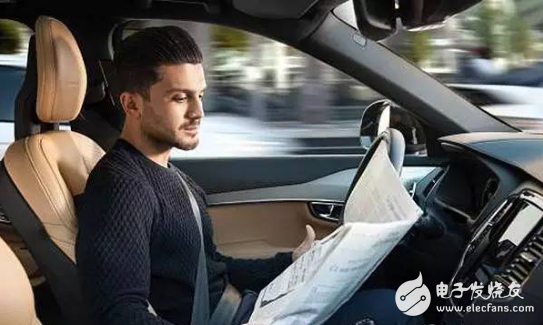As more and more manufacturers begin to focus on the development of intelligent driving systems, technological innovations in the field of intelligent networked vehicles have also developed rapidly. The more recent leading technology is BMW's remote valet parking technology, which is the technology of autonomous parking after the passengers get off the bus; Volkswagen's emergency assistance system, which can automatically stop the vehicle in an emergency. Almost all vehicle manufacturers are looking for ways to create value in this digital arena.
In the high-end car market, high-end car manufacturers see these functions as "chips." They must remain competitive and avoid price dilution, but they will not increase the overall price of vehicle sales, at least the overall price will not be improved by these new features. For example, the Mercedes-Benz E-Class with the 2015 digital feature pack is only priced at €1,654 higher than the 2010 model, although the cost for digital connectivity has exceeded 7,000 euros. Most of these connectivity features are used to replace the basic configuration in today's cars, which were once considered a unique competitive advantage. Similarly, BMW's vehicle digitalization costs more than 6,000 euros per vehicle, including bundled butler service and navigation equipment that provides real-time traffic information. Audi and Lexus also have similar upgrades. In short, the overall price of the vehicle is not expected to increase substantially. The price of high-end cars is generally controlled by competition, ranging from 60,000 euros to 70,000 euros. For example, although car manufacturers have made significant investments in digital functions, the average of Mercedes-Benz E-Class cars The price has only increased by 4%. And this phenomenon is also expected to continue.
In the economic car market, where the target customer is a middle-income consumer, car manufacturers are also trying to increase the basic connectivity of the vehicle. By 2021, spending on digital content will reach 2.6% of the total vehicle price, compared to 0.5% in 2015. However, research shows that consumers in the economic car market are less willing to pay for connectivity or connectivity devices provided by car manufacturers, although the consumer group also places great emphasis on the digital functions and services of the vehicle.
From the current point of view, they are more willing to buy relatively cheap alternatives from third-party aftermarket or download apps via smartphone. In order to ensure profit margins, vehicle manufacturers in the economic car market need to think about what kind of digital features their customers are willing to pay for. Volkswagen and other economic car manufacturers are experimenting with value-aware consumers through digital feature packs.
However, the sales penetration achieved so far has been low. Finally, consumers are more likely to be reluctant to pay for proprietary digital feature packs. They have the potential to choose post-market solutions, such as purchasing third-party navigation devices. Currently, a TomTom navigation system is priced at 180 euros, while the navigation system provided by the vehicle manufacturer is priced at about 600 euros. Although these factors have led to a relatively slow growth rate in the industry, it is expected that the total sales of the intelligent network-related auto market will still reach 122.6 billion euros by 2021, an increase of 204% compared with 2016.

One of the important catalysts is the EU regulations, and by 2018 all car manufacturers must use eCall technology, which is to install intelligent emergency call equipment in each car. In the event of a collision or other accident, the smart call device automatically alerts the traffic authority and sends the relevant data. Although at present, smartphones seem to be able to perform call tasks more efficiently and economically than smart calling devices, there are still many consumers who require car manufacturers to integrate this potentially life-saving technology into vehicles. Design and production go. There are also many car manufacturers who have seen successful cases, such as GM's OnStar technology. The development of eCall technology will also provide a platform for some other digital services.
In addition, factors such as the availability of high-speed wireless networks, cloud data services around the world, and the development of application programming interfaces for developing in-vehicle software will all contribute to the development of intelligent networked automotive technology in the short term. On the demand side, increasing awareness of digital security features and entertainment features will continue to stimulate consumption. This, in turn, will encourage investment in intelligent networked car services and generate demand for post-market connected devices for those who do not purchase digitally-enabled vehicles.
Potential growth in the seven functional areas of intelligent networked automotive technology
Automatic driving

Market potential: Annual compound sales growth rate is 33%, and by 2021, annual sales will reach 39.6 billion euros.
Development trend: This is one of the fastest growing areas in the digitalization function of intelligent networked vehicles. Many technologies have developed faster than expected; the demand for this function in the Chinese market is large.
Challenge: The legal and regulatory framework is not clear and the issue of legal liability.
The main products: autonomous parking and low-speed traffic jam navigation (has been put into use); fully automatic long-distance high-speed cruise (2020 to 2025 can be achieved).
2. Security

Market potential: Annual compound sales growth rate is 27%, and by 2021, annual sales will reach 49.3 billion euros.
Trends: In terms of intelligent networked vehicles, safety is one of the most important selling points for such vehicles; the Chinese market will drive global demand. The European rule to fully popularize eCall by 2018 will also stimulate investment.
Challenge: The commercialization potential of such functional products is limited when standardization and standardization of safety products.
Main products: automatic emergency call equipment in the event of a car accident; dangerous early warning system, equipment to remind drivers of road hazards, roadblocks and blind spots; collision support system, automatic acceleration or control of the steering wheel to prevent accidents.
3. Information entertainment

Market potential: Annual compound sales growth rate is 18%, and by 2021, annual sales will reach 13.4 billion euros.
Trends: Consumers, especially Asian consumers, believe that connected entertainment is a basic function of cars; they want personal devices such as smartphones and wearables to blend seamlessly with cars; digital development drives cross-industry coordination and integration.
Challenge: Lack of standardized processes; control point competition; automotive OEMs must adapt to the rapid product development cycle of the consumer electronics industry.
Main products: personal entertainment features, such as social media, music, movie downloads, restaurant recommendations, etc.; cars as mobile WiFi hotspots; mobile offices that can send and receive mail, hold meetings or other office functions.
Linear Encoder,Digital Linear Encoder,Draw Wire Sensor,1500Mm Linear Encoder
Jilin Lander Intelligent Technology Co., Ltd , https://www.jilinlandertech.com